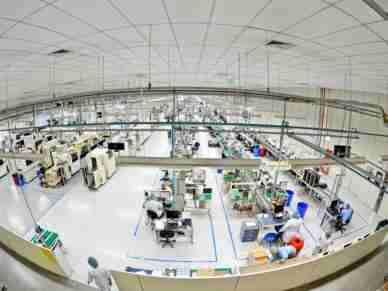
In the mortgage sector, operational expenses have always been a problem that has hampered expansion and profitability. These expenses are the result of several things, such as labor-intensive documentation procedures, regulatory compliance, and the requirement for precise data management.
The demand to keep costs down while upholding good service standards has increased as the sector develops more. A potential answer to these problems is digitization. In fact, many mortgage providers have already adopted e-mortgage solutions. According to FactMR, the global e-mortgage market size is set to jump from $12.1 billion this year to $62.1 billion in 2034.
Among all the e-mortgage solutions, the best application for lenders is automation. End-to-end mortgage automation enables lenders to increase overall efficiency, cut expenses, and simplify processes.
In this article, we will look at how leveraging mortgage automation can help reduce operational costs.
The High Cost of Traditional Mortgage Processes
Conventional mortgage procedures entail a number of complicated phases that frequently call for extensive labor. Every step of the process, from application to closing, requires painstaking attention to detail. Some of the steps include activities like:
- Data verification
- Credit checks
- Document gathering
- Underwriting
These procedures are prone to mistakes, which can cause delays and extra expenses. They also take a lot of time to get the mortgages approved, which can impact the customer’s experience. As noted in a U.S. News & World Report article, the whole timeline can take around three to five months.
A sizable amount of the operating expenditures in the mortgage sector are labor-related. Lenders face additional costs as a result of having to hire specialist personnel to oversee different phases of the loan process. Additionally, depending too much on manual procedures raises the risk of human mistakes, which can result in rework and further cost increases.
Strong compliance controls are also required since mortgage transactions are complicated. This adds another level of cost because expert staff and technology are required to guarantee regulatory compliance.
The Promise of End-to-End Mortgage Automation
End-to-end mortgage automation provides a complete solution to the inefficiencies seen in conventional mortgage procedures.
This technology automates the whole mortgage lifecycle, from the original application to closing and beyond, by utilizing cutting-edge software solutions. It leverages customer relationship management (CRM) solutions to automate the entire mortgage workflow.
For instance, Jungo mortgage automation provides loan milestone automated alerts, simplified lead management, mortgage-specific CRM, etc., which can help streamline the entire workflow. You can leverage any such mortgage automation solutions to minimize the possibility of mistakes, expedite the procedure, and lower labor expenses.
Automation reduces the need for human intervention, which improves data management accuracy. Sophisticated algorithms handle repetitive tasks like data entry, document management, and verification, minimizing errors and guaranteeing consistency.
Furthermore, automation makes it possible to track and update in real time. This gives lenders a comprehensive picture of the loan process at all times. This openness is essential for finding bottlenecks and streamlining processes, which eventually saves money.
Streamlining the Loan Application Process
A borrower and a lender will frequently communicate for the first time throughout the loan application procedure. This stage has historically been quite delayed since it requires a lot of documentation and data verification.
Automating processes like document gathering, income verification, and credit checks greatly cuts down on the amount of time needed to finish this procedure. For instance, information from documents may be automatically extracted and verified using optical character recognition (OCR) technology. This removes the need for human data entry as the system can update itself without human intervention.
Additionally, automated systems may interface with other data sources to enable instant access to important data. This connection reduces the possibility of mistakes that might cause expensive delays while also speeding up the application process. Lenders are able to process applications more rapidly, increasing client satisfaction and cutting expenses.
Enhancing Underwriting Efficiency
In the important underwriting step of the mortgage application process, lenders evaluate the risk of approving a loan. Underwriting has historically been a labor-intensive and time-consuming process that calls for trained staff to manually analyze applications, confirm data, etc. Not only is this a costly procedure, but human judgment can lead to discrepancies.
End-to-end mortgage automation uses machine learning (ML) and artificial intelligence (AI) algorithms to revolutionize the underwriting process. AI is one of the technologies that has been quickly adopted across industries. It also witnessed a positive response from the mortgage industry. As noted in a Forbes article, AI can be used for various mortgage business aspects, such as:
- Improving customer experience
- Automating routine tasks
- Predictive analytics
- Fraud detection
With the use of these technologies, large volumes of data may be correctly and swiftly analyzed to spot trends and evaluate risk. Applications may be processed by automated underwriting systems far faster than by human underwriters, which lowers labor costs and boosts throughput.
Furthermore, automated underwriting systems have the capacity to learn and adapt over time, increasing their accuracy. This flexibility lowers the possibility of defaults and related expenses by enabling lenders to hone their standards and make more informed choices.
Simplifying Compliance and Regulatory Requirements
The mortgage market is highly regulated, and lenders must abide by a plethora of compliance requirements aimed at safeguarding customers and preserving market stability. Costs associated with compliance can be high, especially if manual procedures are used to guarantee conformity to complex laws. Infractions or neglect in terms of compliance can lead to heavy penalties, harm to one’s reputation, and even legal action.
These issues are resolved by end-to-end mortgage automation, which incorporates compliance checks into each phase of the loan application procedure. The risk of non-compliance can be decreased by programming automated systems to make sure that all activities are in line with the rules.
Automated systems, for instance, can confirm that:
- Borrowers get all the needed information
- Interest rates are computed appropriately
- All relevant paperwork is completed correctly
Additionally, comprehensive audit trails can be produced by automated compliance systems. This gives lenders a clear record of every move made during the loan application process.
In addition to streamlining the audit process, this transparency offers protection in the case of disagreements or regulatory scrutiny. Lenders may minimize the risk of expensive errors while cutting down on operating expenses by eliminating the need for human compliance checks.
Frequently Asked Questions
What is end-to-end process automation?
End-to-end process automation is the process of automating a company’s operation from start to finish utilizing technology. All actions taken to increase efficiency and decrease manual intervention are included in this, starting with the first duties and ending with decision-making.
Can you automate mortgage payments?
Many mortgage providers offer automated payments. They deduct the same amount from your checking or savings account on the same day each month to cover your mortgage payment. If accessible, the web interface of your mortgage provider is usually where you may set up automated payments.
What is automated mortgage underwriting?
In automated mortgage underwriting, profile analysis is performed by sophisticated artificial intelligence (AI) technology rather than by people. As a result, it uses credit report analysis to electronically carry out the loan approval procedure for mortgages.
In the mortgage business, cutting operating expenses while upholding excellent service standards is a never-ending struggle. Entire mortgage automation is a potent answer to this problem, providing a number of advantages above and above simple cost savings.
The use of automation will probably become more significant as the mortgage market develops in order to keep a competitive advantage. Lenders that use this technology will find it easier to negotiate the market’s complexities, save operating expenses, and offer greater service. Thus, end-to-end mortgage automation serves as a stimulus for change and expansion in addition to being a cost-saving instrument.
















Leave a Reply